Heather M
5 Stars ⭐️⭐️⭐️⭐️⭐️
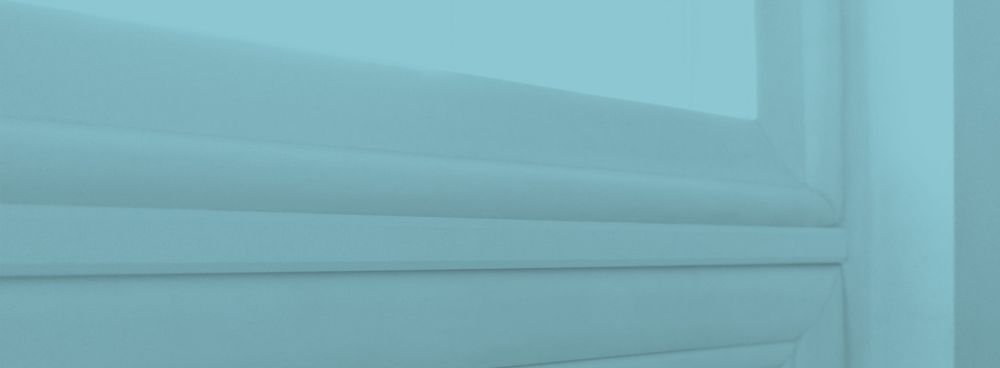
Cities across the US have introduced carbon emissions legislation to do their part to combat climate change. The Big Apple leads the way with the biggest climate change legislation, the Climate Mobilization Act. Local Law 97 is one law within the Climate Mobilization Act that addresses carbon emissions of buildings in NYC to make them more sustainable.
We will discuss Local Law 97 (LL 97), what it means for building owners and managers, affordable housing, and how best to comply with the new directives.
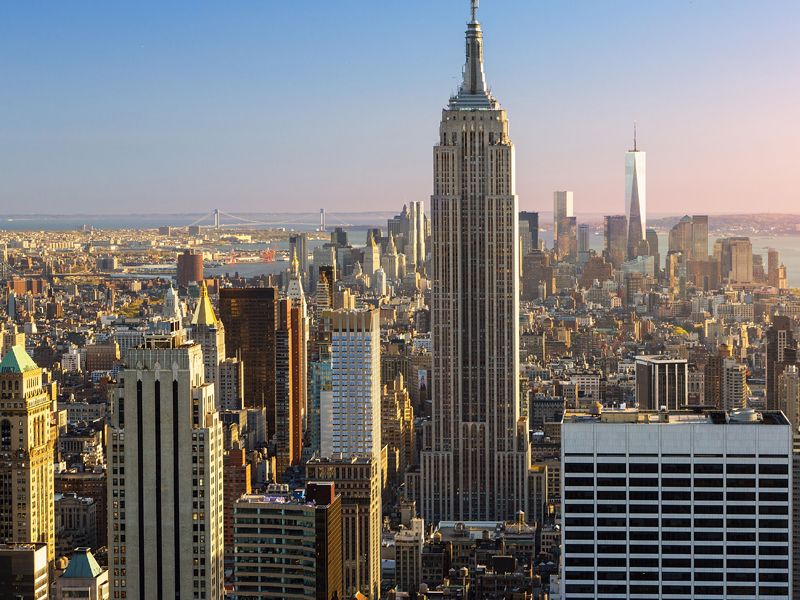
Local Law 97 is a law under the 2019 Climate Mobilization Act that targets carbon emissions from the biggest buildings in New York City. Under Local Law 97, most buildings 25,000 square feet and larger will be required to meet carbon emissions cap, or implement energy efficiency standards, by 2024 in order to avoid significant fines. The carbon emissions cap will continue to tighten periodically. By 2030, most buildings 25,000 sq. ft. and larger will have to reduce their emissions by 40%. By 2050, NYC building emissions will need to be lowered by 80%. Individual buildings’ emissions from 2005 will act as the baseline from which emissions will have to be reduced.
Buildings are the leading contributor to greenhouse gasses and global warming in major cities. By capping carbon emissions from the largest buildings in cities across the world, legislators aim to slow the rate of global warming and reduce estimates of expected temperature increases in the coming decades to avoid worsening natural catastrophes.
Beginning in May of 2025, building owners and managers will have to submit annual emissions reports to prove that their NYC buildings are meeting the new sustainability standards set forth under Local Law 97.
Buildings smaller than 25,000 square feet are exempt from Local Law 97. If you are the owner of a building 25,000 square feet or larger, see below to understand if you are affected by Local Law 97, and if that means you must adhere to carbon emissions caps for your building(s), or if you may opt for energy efficiency measures.
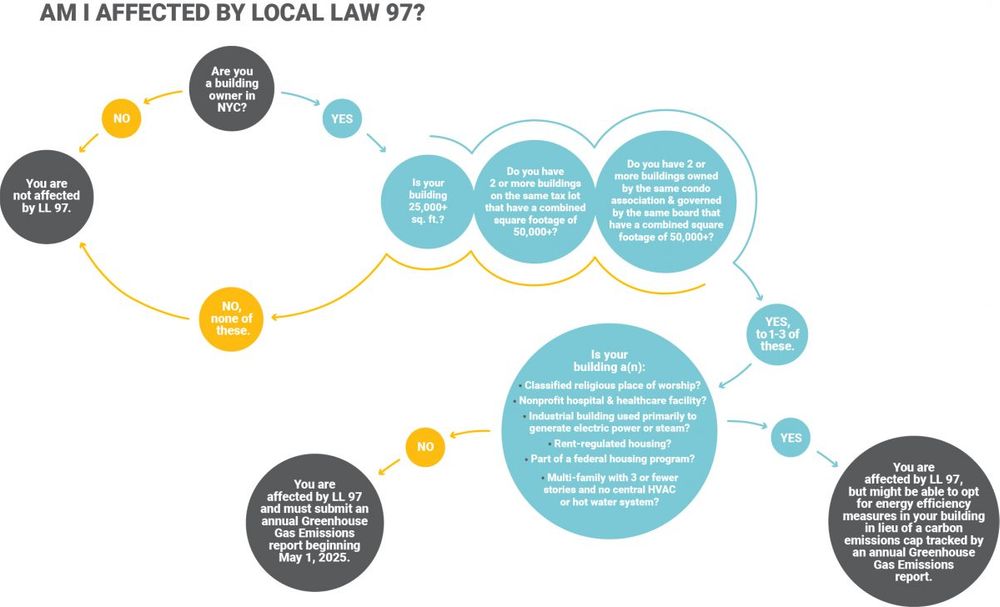
If you are the owner of a building in New York City and you must adhere to carbon emission caps for your building to make it more sustainable, then you are subject to fines for failing to do so. Cases of intentionally misreported emissions on the annual Greenhouse Gas Emissions report can be punishable by fine and imprisonment.
To see the amount in fines you would face for your building if you failed to meet the carbon emissions cap, use this NYC LL97 Carbon Emissions Calculator.
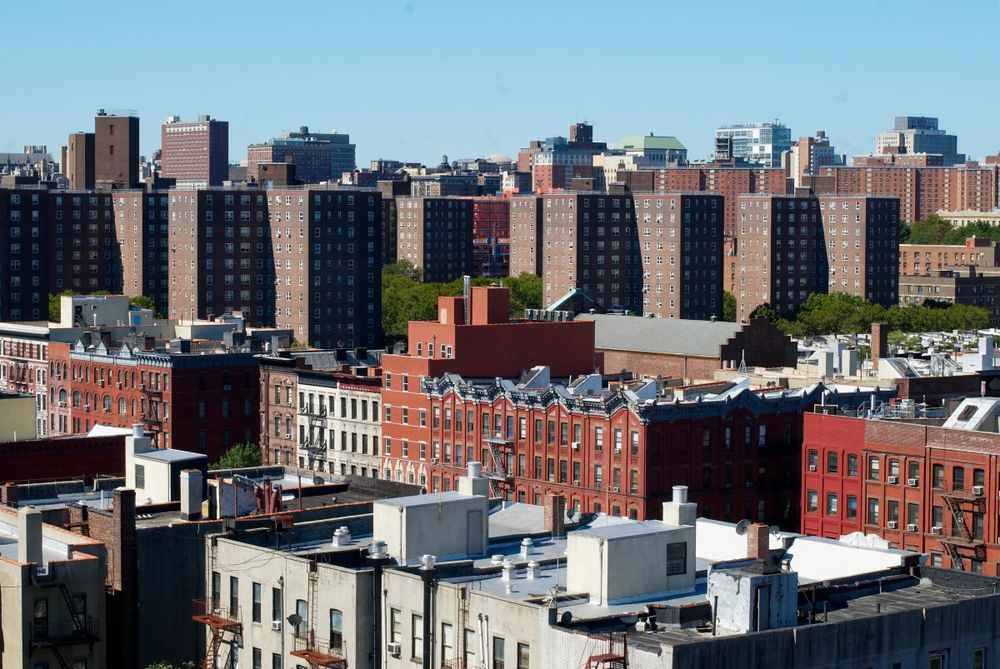
Under Local Law 97, certain buildings that meet the 25,000 square footage threshold to trigger NYC carbon emissions cap requirements have alternatives to meeting the 40% carbon emissions reduction. Local Law 97 Guidance for Affordable Housing outlines which buildings have options available to them. This includes buildings that have at least 35% of its units rent-regulated, among others.
These buildings have the option to prove by December 31, 2024, that they have taken steps to improve their buildings energy efficiency. The Prescriptive Energy Conservation Measures include installing individual temperature controls and air sealing windows.
The combined benefit of all of the listed energy conservation measures will drastically improve the sustainability of large NYC buildings that would otherwise be unduly burdened by carbon emissions caps. Insulating windows, walls, and ceilings and giving residents of these buildings temperature control abilities will go a long way to improving their safety and quality of life.
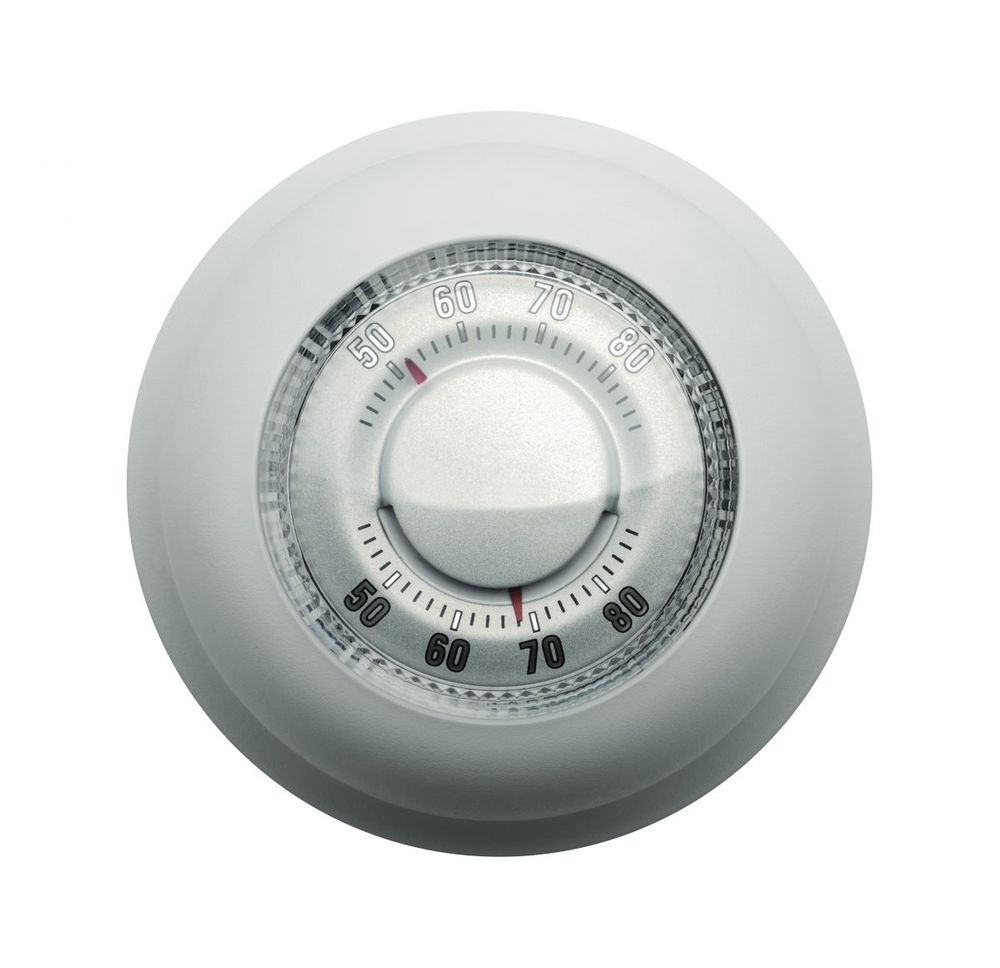
Windows account for 20% of a building’s energy loss. A window upgrade project will go a long way in making your building more energy efficient and compliant with increasingly popular carbon emissions cap legislation, such as Local Law 97.
For window upgrade projects, your options are to retrofit your windows or replace them. Replacing windows means removing every part of the window, frame and all. This is the most invasive, expensive, time-consuming option, and it requires hiring professionals.
When talking about retrofit windows, there are two main options: replacing the window sash or fitting the frames with window inserts. Replacing the sash means the frame stays in place while the moving panels (single, or double-hung) are removed. Replacing the sash is an invasive process, but far less so than window replacement. The parts are more affordable, and a savvy DIYer can complete the project on their own. However, seeking professional assistance is recommended since improper replacement of a window sash can have the opposite effect than the intended energy efficiency upgrade.
| Window Replacement | Window Retrofit | ||
|---|---|---|---|
| Type | (Entire Frame Replaced) | Sash Replacement | Window Inserts |
| Time | 1-6 Hours | ~3 Hours | 15-Minute Installation |
| Cost | $$$ | $$ | $ |
| Difficulty | Professional Required | Professional Recommended | DIY |
Window inserts as a window retrofit project are the most affordable and least invasive option for energy efficiency upgrades. And with Local Law 97 addressing NYC’s largest buildings, the cost, time, and level of invasiveness of energy efficiency upgrades are important factors to take into account. This least invasive retrofit project, as opposed to frame or sash replacement, will allow you to avoid pausing work and life schedules to complete.
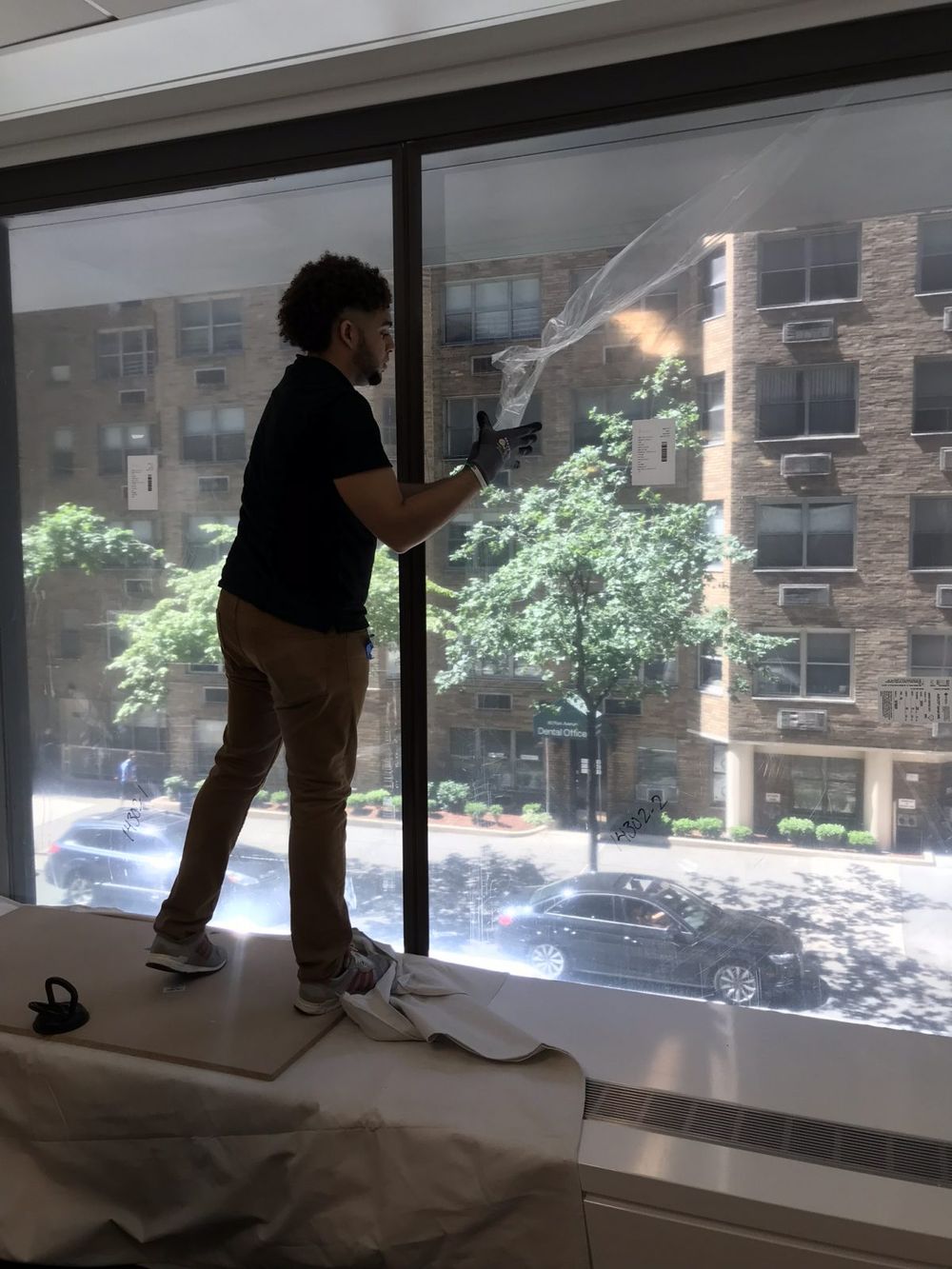
The Clean Fight New York is a not-for-profit accelerator program in its second year. It was created to identify CleanTech companies and assist them in scaling their products for use in NYC to make buildings more sustainable, in a way similar to that prescribed in Local Law 97. The Clean Fight selects three start-ups each year for each designated area of building energy efficiency. This year the categories are Smart Electrification, Advanced Optimization, and Envelope Efficiency. Indow was the only start-up included in the Envelope Efficiency category addressing energy loss through windows.

With buildings 25,000 square feet and larger requiring drastic measures to reduce carbon emissions and energy usage in compliance with Local Law 97, full window frame or sash replacement is not financially feasible for building owners and managers. The Clean Fight New York is connecting building owners and managers with CleanTech companies, and providing the blueprint for others as they begin the daunting task of making their huge buildings more energy efficient.
Read about the Department of Energy’s study of Indow inserts to learn more about why our inserts were chosen for The Clean Fight New York and how they can help your NYC building become sustainable and meet energy conservation measures under Local Law 97.
Indow has insulated more than 23,000 buildings - helping reduce carbon emissions by nearly 200,000 tons - and creating comfort across the US & Canada!
I appreciate everything about the whole Indow window process.
Scheduling and holding a consultation online was easy and seamless. I consultant with KAYA, and he provided a thorough easy-going no pressure to move forward until I was ready consultation.
Incentives were clearly outlined if I decided to move forward and order to be able to make my inserts even more affordable if I acted in a timely manner with measuring and submitting my order as well as returning the measure kit.
The Indow inserts arrived within the expected timeframe and installing them was very easy. One of my favorite parts was watching how to install video, because they used humor, and it really held my attention and put me at ease, allowing me to take in all the little details I needed to insert my Indows correctly.
Within hours, I noticed a temperature shift in the room. It was cooler and more comfortable. The next day when I worked in my office with the Indows the landscaper was across the street with the leaf blower and there was considerable reduction in noise making it a low background buzz instead of a disturbance to the work I was doing. I’ve only had them installed for three weeks and I’ve been so happy with them. It was a great investment for that room in the house that I use for my office.